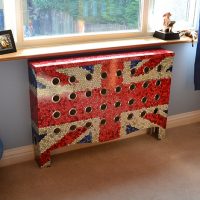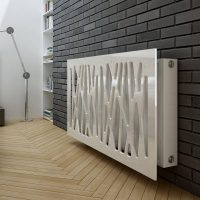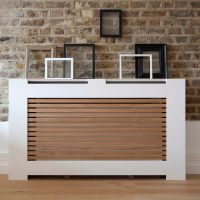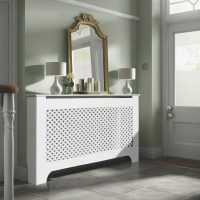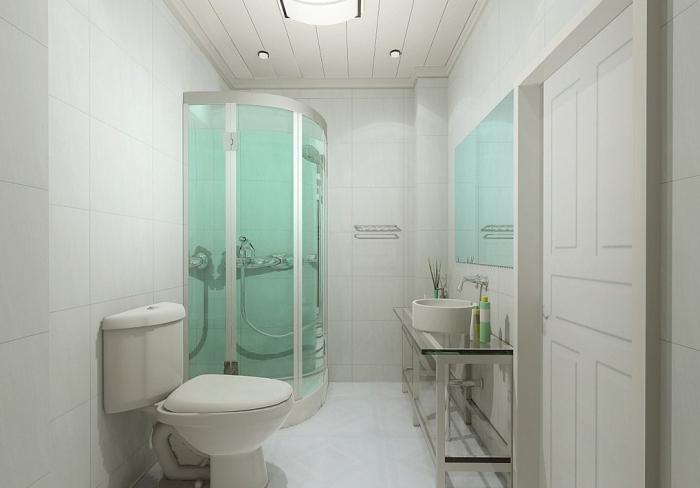How to decorate a battery: recommendations of designers and heating engineers
Heating batteries are undoubtedly important for every room designed for people to stay. As a rule, the location of heating radiators is always in sight. Therefore, their appearance significantly affects the overall appearance of the room. During the repair process or preparing for it, the issue of the appearance of the heating batteries should be carefully considered. Doesn’t repair include in the next life plans? - it doesn’t matter, there are solutions in this case too. Due to the availability of information, as well as the possibility of acquiring a variety of materials, decorating various interior items has become available to everyone, regardless of finances and craftsmanship.
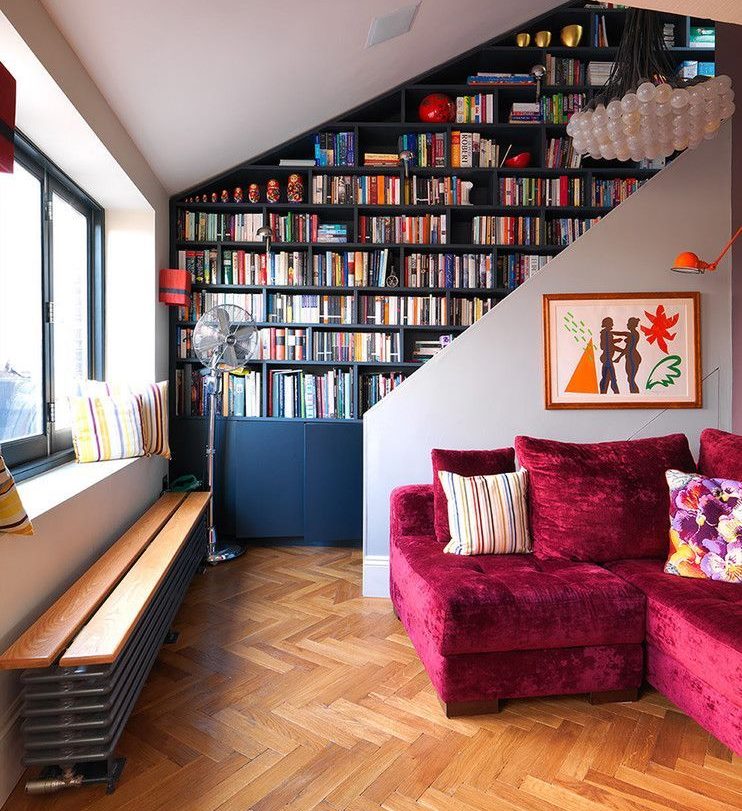
The correct approach to decorating the battery is based not only on the aesthetic component, the functional purpose of the heater is also important

A very unfortunate decision - the movement of warm air is almost completely blocked
Possible decoration options for heating radiators are selected according to a number of parameters. In order to please the result of work, when deciding on the choice of finish for heating radiators, one should proceed from the following initial data:
- initial properties of the subject of decoration;
- the style of the room in which the batteries are located;
- the color scheme of the room and the style of its design;
- functional purpose of the room.
Well, if you read this article, you already know what exactly you want. If you still have not decided what is the best way to do it, then perhaps after reading it, some great ideas will come up. You just have to choose a method for converting heating batteries that is affordable and feasible if you want to make your own heating battery decor.
Content
Beauty at the expense of heat
During the overhaul of the premises, you can, of course, hide the battery in the wall using the device of a niche made of drywall, chipboard or plastic. Ventilation of heat and its removal from the battery, in this case, is carried out through a grate, which must be arranged in such a niche. As a rule, such niches are decorated with a chipboard or wood lattice. It is possible to select both the lattice itself and its frame in the necessary color scheme. Lattices such are sold in a large assortment, they are durable and good heat transmission.

Battery Bench
In addition, the issue of converting heating batteries can be solved by closing them with special decorative screens. Such devices can be installed directly in front of the radiators or carried in hinged form.

Hinged screen made of thin wooden slats

A simple wooden grille painted to match the wall finish.
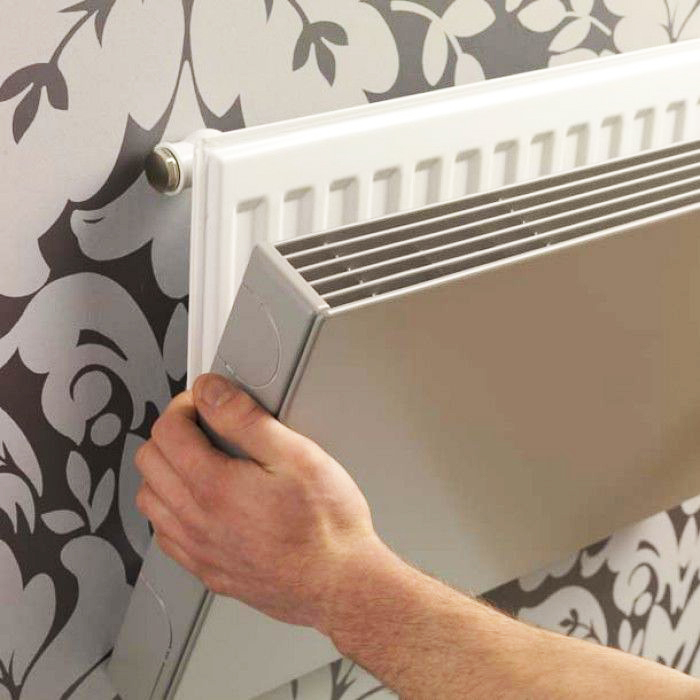
A metal hinged screen slightly reduces heat transfer, is inexpensive and easy to install
These solutions can not always be called optimal, since a very large part of the heat generated by the battery, in this case is wasted. The effect is close to that which would be achieved by hiding the battery behind the curtains.

Openwork metal screen

Any screen design must provide access to the heating battery
At the same time, closing radiators serves to protect young children from burns. The screens, boxes and niches are beautiful, they can be selected for any interior.This type of decor is used, as a rule, in living rooms and is an ideal stylistic solution for them. Closing batteries in children's rooms with boxes and screens is the best solution, both for security purposes and for decorative purposes. A panel made of wood or chipboard can be decorated with bright patterns and used as a game element.

Screen Idea for High Battery

An old wooden bench as a battery box in the hallway of a village house
DIY screen
However, the screen for the battery can be made independently. Such materials as wood, chipboard or plywood are best suited for these purposes. It is advisable to paint these materials in the color of the room. In addition, plexiglass is perfect for these purposes. This material is safe. You can also apply suitable paint on it or decorate using decoupage technique.

The easiest way to make a screen is wood
When deciding to make a panel for the battery yourself, you should remember about the need to make holes in it. They are necessary for the passage of warm air from the battery into the room.

The front panel of the screen is made of boards 16 mm thick

As a lattice it is convenient to use a perforated panel made of fiberboard, which can be purchased at any building materials hypermarket

Before the battery, you must install the frame

The front panel of the screen is fixed with screws

The result is a completely attractive design
The best kitchen solutions
The design of kitchens, not as strict as is customary for living rooms, gives free rein to imagination. In addition to the above methods of hiding heating radiators, in the rooms where culinary masterpieces are being created, designer delights for decorating heating radiators are also created. The battery and the pipe connecting it to the heat source can be painted in the color of the walls, it can be decorated using the decoupage technique, or you can combine these two methods.

A battery painted to match the walls will be less conspicuous

You can achieve even more effect if you paint the battery to match the wallpaper.

The battery can be displayed, making it part of the artistic composition
Many ideas are available on the web. Taking them as a basis, you can create a masterpiece yourself and without any special labor and time costs, decorating the external elements of the heating system with an elegant or cheerful pattern. Decoupage of the battery is a transfer of the picture from the media to the metal surface of the radiator. When using decoupage technique, batteries can be decorated using ready-made drawings made on thin paper (rice paper and ordinary decorative napkins are suitable). There are a lot of design options: flowers, wood decoration, geometric patterns.

Rainbow battery

Khokhloma painting on a heating battery
If you have artistic abilities, then you can do without ready-made solutions and apply the image with paint directly to the surface. For such work you will need heat-resistant paints and varnish. The latter is necessary for those who decide to perform battery decoupage on their own. For decoupage, you also need glue, ordinary PVA is suitable.
Making battery in the bathroom
Not every bathroom has separate batteries, except one that acts as a heated towel rail. Modern products are quite aesthetic. The need for decoration arises if the battery has not been replaced for a long time, so it has lost its appearance. The easiest way to give the heater a presentable appearance is to stain. Paint colors are selected according to the color of the room. Of course, the product to be painted is thoroughly cleaned. However, decoupage in the bathroom is also appropriate.

An example of using the battery as a bright accent
In addition, it is possible to close the battery in the bathroom with a grid, which can act as a storage system.

Protective screen with storage shelves

The battery can be hidden in a stylish cabinet

Or leave it in sight, covering it with a shelf on top
To summarize, it should be noted that decorating a heating battery is a creative process. When choosing a method for transforming heating radiators, the main thing is not to overdo it with decorative elements, having sustained the general style of the interior design. It is also important to consider that the main functional purpose of the radiator should not suffer - heating the room in the cold season.
They decorate both old cast-iron batteries and modern products from aluminum and bimetal. The latter are particularly malleable for drawing patterns, as the exterior design consists of flat plates that are easy to apply.
When choosing a stain, it should be remembered that special paints that withstand high temperatures are produced for heating radiators.
Video: heating radiator painting technique









